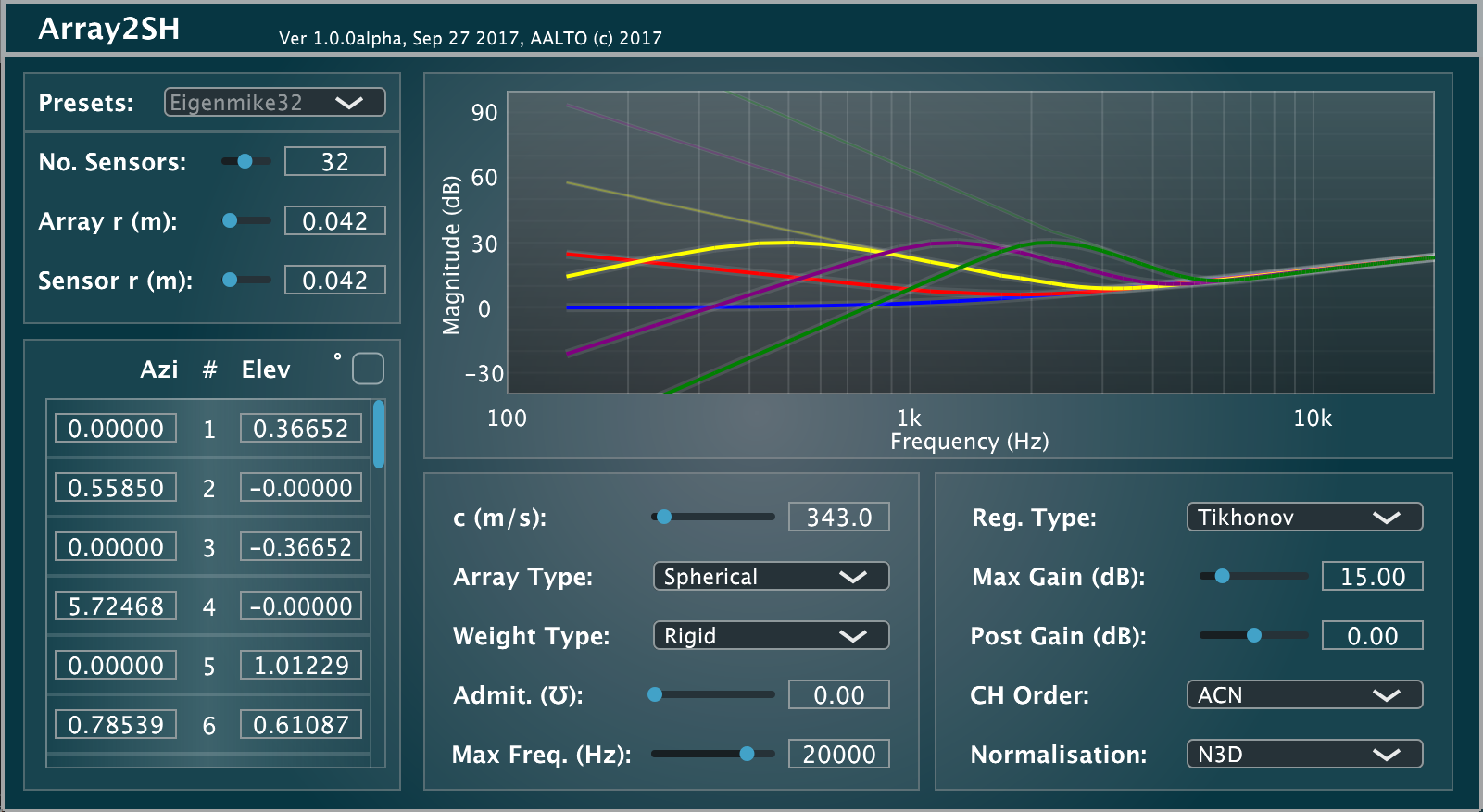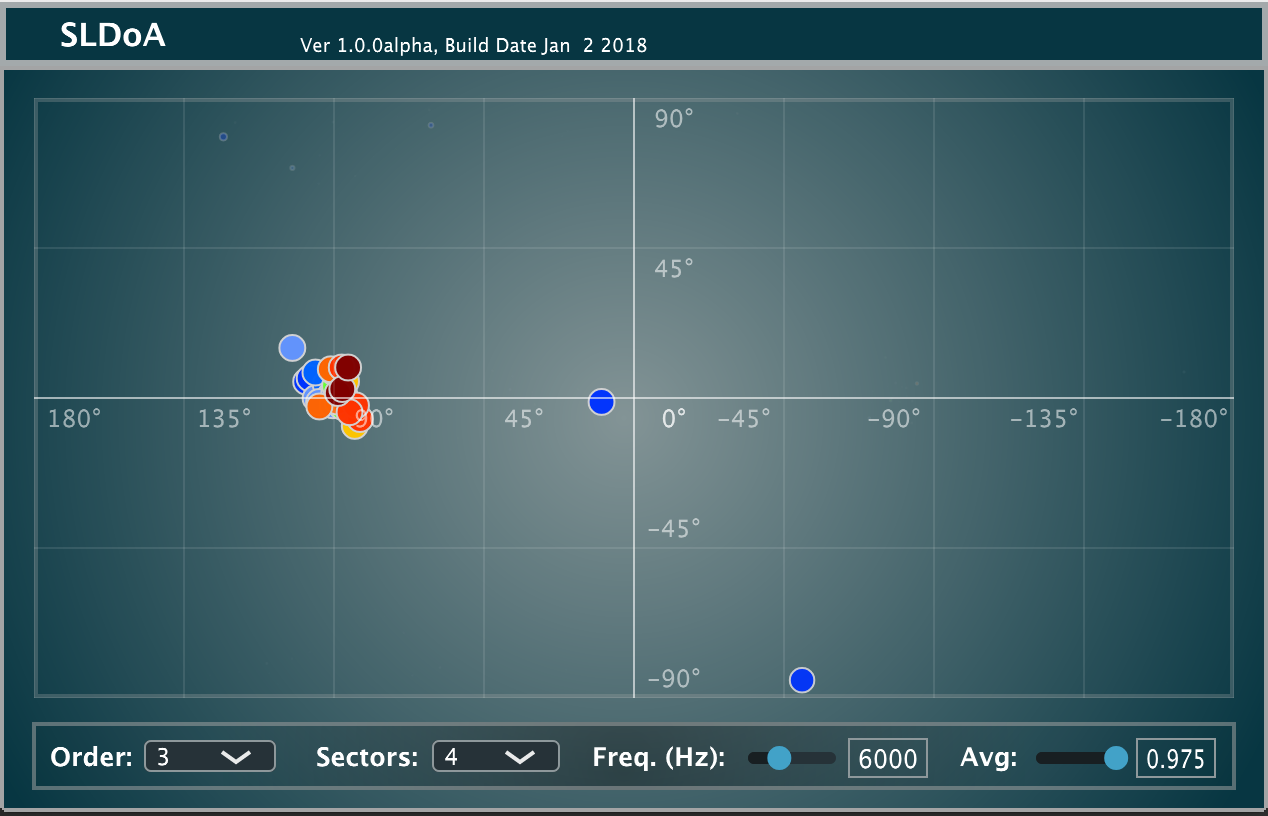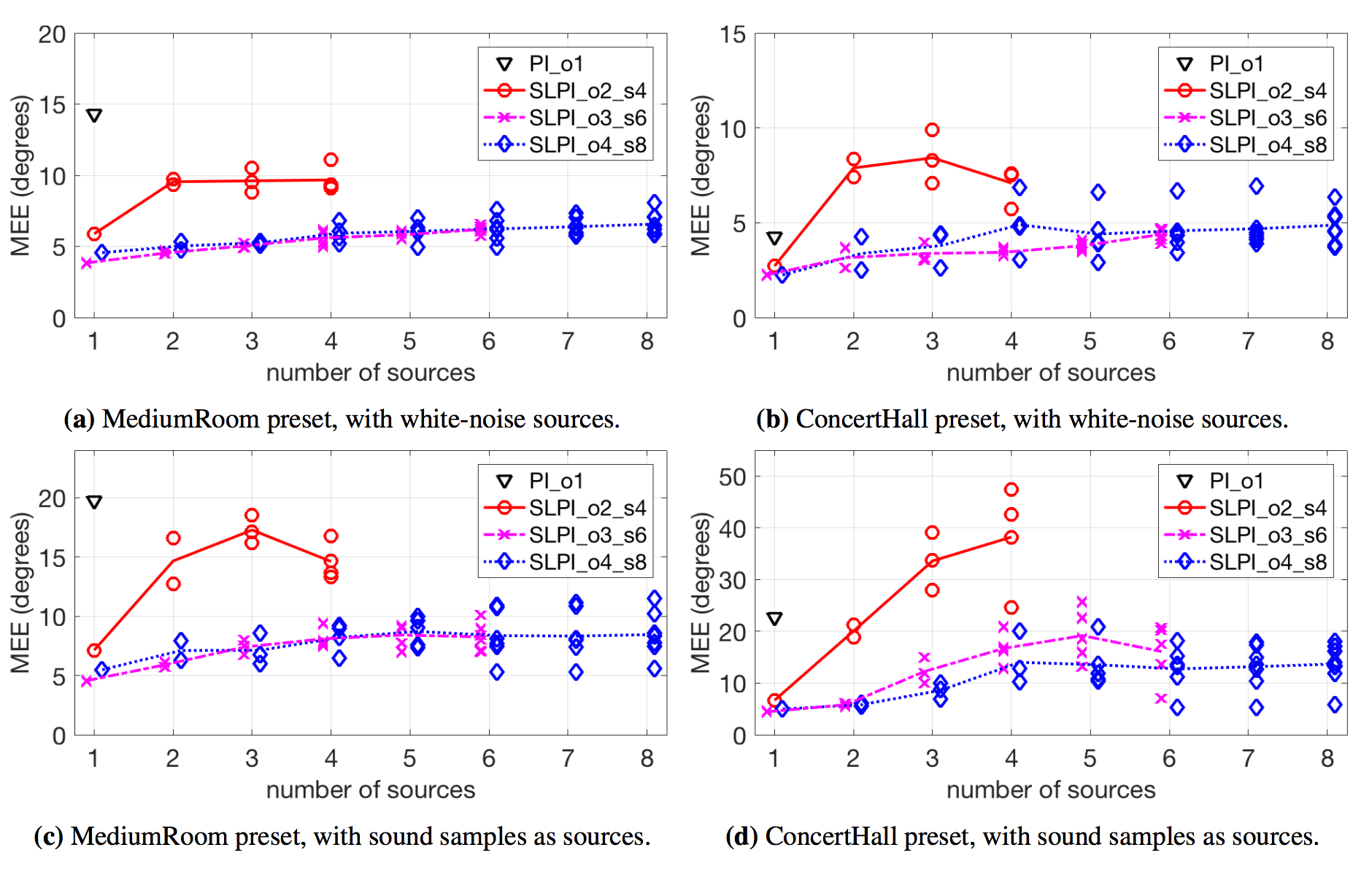Leo McCormack, Symeon Delikaris-Manias, Angelo Farina, Daniel Pinardi and Ville Pulkki
Real-time conversion of sensor array signals into spherical harmonic signals with applications to spatially localised sub-band sound-field analysis
Companion page for the AES 144th Convention, Milan, Italy, 2018 May 23-26.
Abstract
This paper presents two real-time VST audio plug-ins for processing sensor array signals for sound-field analysis. The first plug-in utilises spherical or cylindrical sensor array specifications to provide analytical spatial filters, which encode the array signals into spherical harmonic signals. The second plug-in utilises these signals to calculate the direction-of-arrival of sound sources, based on a spatially localised pressure-intensity (SLPI) approach. The problem with the traditional pressure-intensity (PI) sound-field analysis, is that it performs poorly when presented with multiple sound sources with similar spectral content. Test results indicate that the SLPI approach is capable of identifying sound source directions with reduced error, when compared to the PI method, for different environments and varying number of sources.
VST Audio Plug-in Downloads
All plugins have been tested in REAPER64, which is the recommended DAW for these plug-ins.
Please note that each channel configuration has been compiled as a separate plug-in. Therefore, first order spherical harmonic (or ambisonic) signals should be processed by the plug-ins with the "_o1" suffix, for example.
Array2SH: Conversion of array array signals to spherical harmonics signals

This spatial encoder, named Array2SH, generates theoretical filters up to 7th order for several different array types and sensor directivity patterns. Additionally, the plug-in offers control over the speed of sound of the medium, in order to support both microphone and hydrophone arrays. It also accommodates for different spherical harmonic conventions and normalisation schemes, including support for the Ambix convention, so that it may also be utilised for Ambisonics reproduction purposes.
This plug-in can now be found here.
SLDoA: direction-of-arrival esimator using spatially localised pressure-intensity

Please note that the SLDoA plug-in supports frame sizes of 512/1024/2048 samples, only. And expects a sampling rate of 44.1/48kHz.
The plug-in is configured to support spherical harmonic signals that conform to the ACN channel ordering and N3D normalisation conventions. These ACN/N3D signals can be generated using the Array2SH plug-in for spherical and cylindrical arrays.
This plug-in can now be found here.
Results
The following results were taken from the paper:

Here are the mean estimation error (MEE) values when utilising the SLPI DoA approach with different orders and number of sectors. The markers denote the individual DoA estimates per source; whereas the lines denote the mean of the DoA estimates for each number of sources (where applicable).

Here the MEE over time while utilising the PI and SLPI- based DoA algorithms with the Aambeo, Cylindrico and Eigenmike32 arrays. A male speaker was placed at [-90,45] and one female speaker was placed at [-30,-30] as an interferer. The proposed SLPI algorithm was configured to utilise fourth-order spherical harmonic signals and 8 uniformly distributed sectors. Also shown is a comparison between measurement-based spatial encoding, denoted with "_measurement", and theoretical spatial encoding using the Array2SH plug-in, denoted with "_theory".
How to cite our work
McCormack, L., Delkaris-Manias, S., Farina, A., Pinardi, D., and Pulkki, V., "Real-time conversion of sensor array signals into spherical harmonic signals with applications to spatially localised sub-band sound-field analysis", Proceedings AES 144th Convention, Milan, Italy, May 23--26, 2018.
Updated on Wednesday June 15, 2017
This page uses HTML5, CSS, and JavaScript